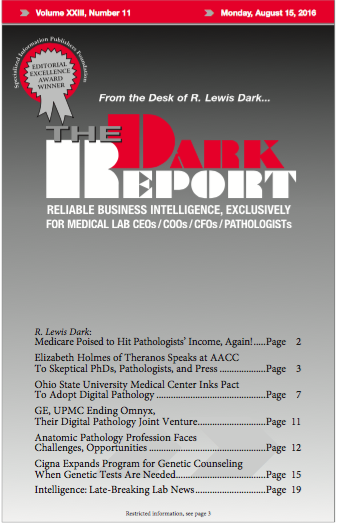CEO SUMMARY: Elizabeth Holmes, Founder and CEO of Theranos, Inc., was given the ideal platform by AACC to show the science behind her lab company’s much-touted diagnostic technologies. But in a surprise to the assembled audience, Holmes, accompanied by three PhDs on her team, chose to discuss: a) her company’s new business strategy; b) an …
Elizabeth Holmes of Theranos Speaks at AACC To Skeptical PhDs, Pathologists, and Press Read More »
To access this post, you must purchase The Dark Report.


